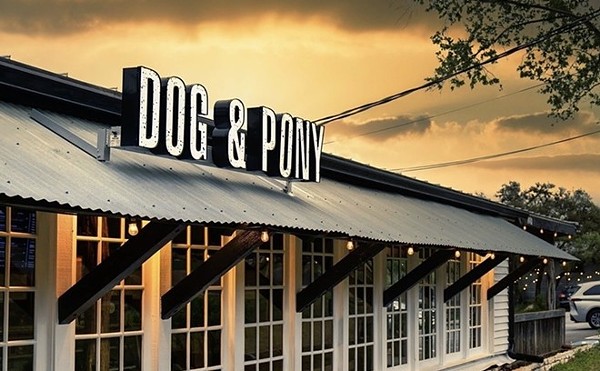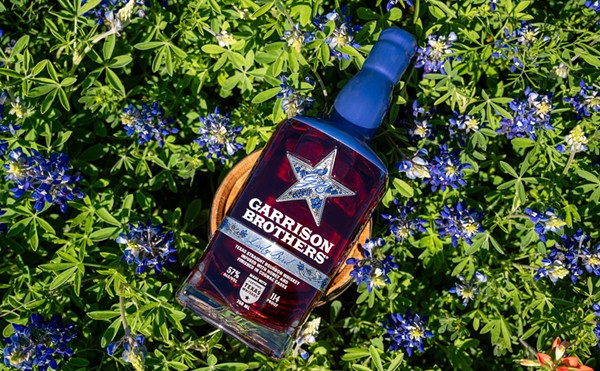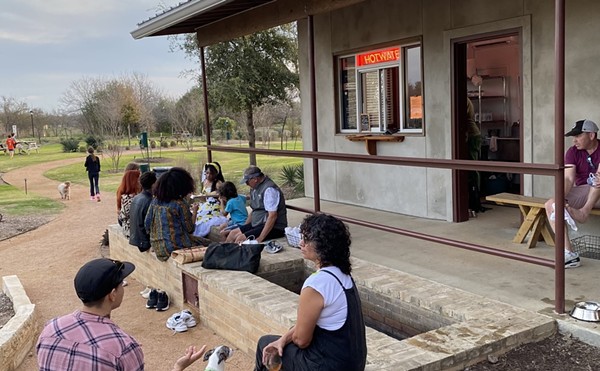Growing and cooking corn requires the right tools and a feel for the earth
The sweet-corn stand on West 38th Street was no bigger than a family-sized kitchen table and sat behind my grandparents' house in the bend of a U-shaped gravel driveway beneath a cottonwood tree.
From the '50s through the '70s, my grandparents and their five children, including my father, worked the stand; as a small child I sat on it like a blonde kewpie doll. Beginning in 1978, for seven summers the next generation continued the tradition; my brother and I sacked, hauled, and sold sweet corn every day from 7 in the morning until the last baker's dozen had been sold, usually no later than 6 o'clock. Starting at sunrise, Grandma prepared tomatoes, cucumbers, peppers, and onions for sale, while Grandpa and college-age boys he knew from the neighborhood would pick for three hours, then drive in from the fields in a Jeep, an International, and a Mazda truck, the beds so laden with dewy ears that the tailgates nearly dragged the ground. Seventy dozen, a hundred dozen, I forget how much corn we'd sack each day, but over the summer the husks turned our hands to sandpaper, and many nights I dreamed of counting to 13, over and over again.
Most days were busy, but Saturdays were frantic. Cars lined up for eight city blocks and occasionally customers abandoned their cars in the street and walked to the stand to be first in line. They became addicted, shipping it to their friends in Alaska, taking it on vacation, grilling it, freezing it, eating it raw, and shaking their heads in amazement over how corn could be so sweet and tender. Not like the grocery. Not like other produce stands.
| Alas, sweet corn: The rustle of the leaves, the smell of pollen, and the sweetness of the kernels popping in your mouth. (Photos by Julie Barnett) |
Sorg corn was special, and not just because we sold it in baker's dozens. So special that when my mother, her feet in stirrups, was delivering my sister at the hospital, the obstetrician asked my father if he was related to the Sorgs who grew sweet corn. "The doctor was getting ready to catch her, and here he was talking about corn," my mother recalled.
"It was painful at this point and I thought, Hey, I should be the center of attention. I was irritated."
The specialness came from Grandpa's intuition about when to pick - earlier rather than later to ensure a more tender ear - and from his commitment to selling corn the same day it was harvested. After 24 hours, the sugars turn to starch and you may as well gnaw on the cob. That's why grocery corn, shipped from afar, tastes bland and chewy.
| Cooking corn Avoid boiling corn; the flavor and vitamins wash down the drain with the water. Instead, buy a pressure cooker (not a canner). Pour 1 cup water into the pressure cooker and place a rack inside. After husking the corn, put the ears on the rack, firmly lock the lid, place the rocker (also known as a regulator) on the stem, and begin cooking over high heat. After the rocker moves briskly for three minutes, turn off the heat. Place the pressure cooker in a sink under cold running water to reduce pressure. After about two minutes, when the rocker has stopped and the pressure is down, unlock the lid. Serve corn immediately. |
Grandpa staggered the crop, planting every five days for about a month. A few years were ideal: Just enough rain - about an inch a week - and heat - in the mid-'80s - for a bumper crop. But farming is risky: In '83 we had a terrible drought and the ears burned up in the field. In '79 floodwaters were so deep that muskrats swam between the corn rows. My grandfather had his first heart attack that summer, and the family felt gloomy, wet, and worried.
He used fertilizers but few herbicides or pesticides. Blackbirds were the main nuisance. "A whole flock could strip the corn down and ruin it in a few minutes," Grandma explained. Before she went to Mass on Sundays, she would drive to the farm and toss firecrackers into the field to scare the birds away.
Grandpa died in the winter of 1996. The U-shaped driveway now belongs to someone else. The large ear of corn my Uncle Chris painted on the side of the toolshed is gone. Although there is no more Sorg corn, Grandma still grows an elaborate flower garden and other vegetables for herself and her husband Ralph. And she remembers running the business on an alchemy of dirt and rain and love for the earth.
"It's a way of life for me. I have a love for the earth," she told me. "I've said I could write an ode to topsoil. The top 6 inches is what keeps the world living." •
By Lisa Sorg



















